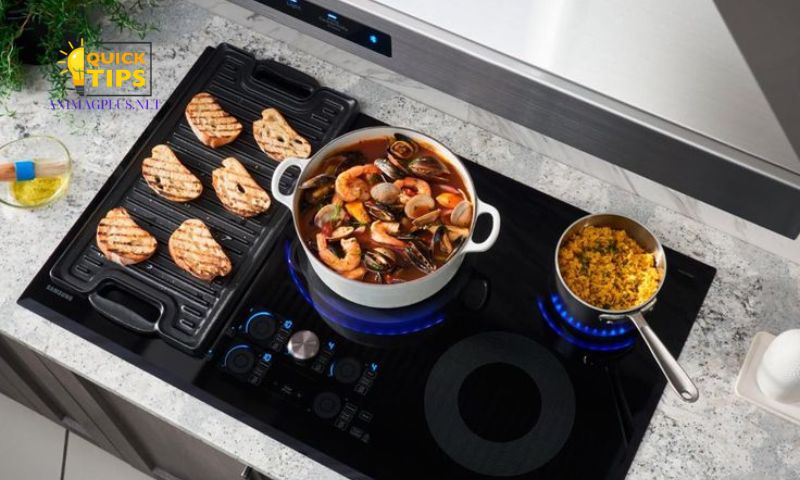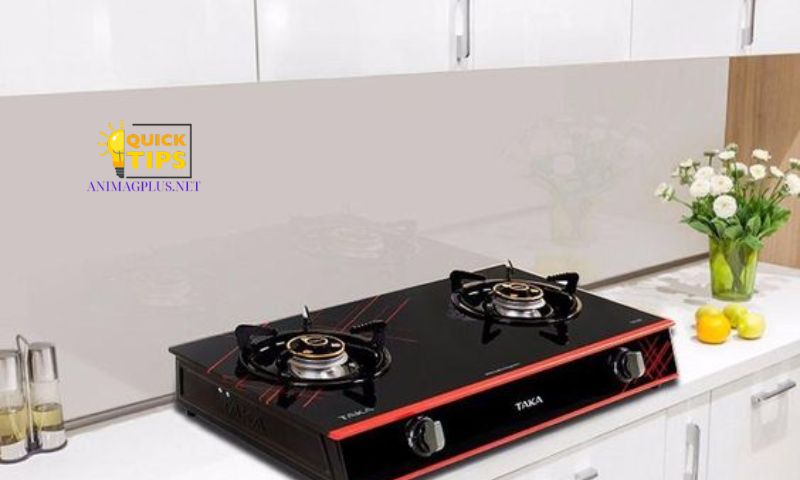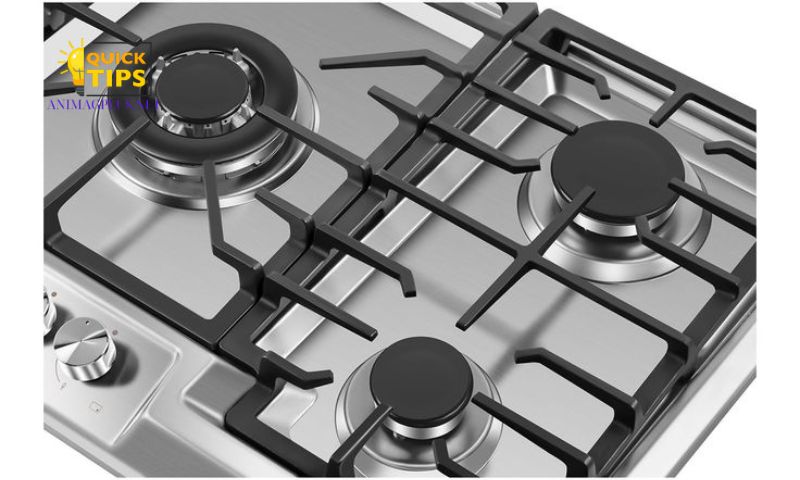Keeping your gas stove clean is essential for both efficiency and safety. A dirty stove can lead to uneven cooking, unpleasant odors, and even potential fire hazards. In this comprehensive guide, Animagplus.net will provide you with detailed tips for cleaning a gas stove, ensuring it remains in top condition and operates efficiently.
Why Regular Cleaning is Important?

Regular cleaning of your gas stove is crucial for several reasons. First, it enhances the stove’s efficiency and performance. Grease and food particles can clog burners, resulting in uneven heating and prolonged cooking times. Second, a clean stove prevents the buildup of grime and grease, which can be difficult to remove if left for too long. Lastly, regular cleaning reduces the risk of fire hazards, as accumulated grease can ignite if exposed to high temperatures.
Materials Needed
Before you start cleaning your gas stove, gather the following materials:
- Mild detergent
- Baking soda
- White vinegar
- Scrub brushes (including a toothbrush for small areas)
- Microfiber cloths
- Gloves for protection
Having these materials ready will make the cleaning process more efficient and effective.
Preparation Steps

- Turn off the Stove: Ensure that all burners are turned off and the stove is cool before you begin cleaning.
- Remove Components: Carefully remove the grates, burner caps, and knobs. These components can be cleaned separately for a thorough job.
Cleaning the Grates and Burner Caps
- Soak in Soapy Water: Fill your sink with warm, soapy water and soak the grates and burner caps for about 15-20 minutes. This helps to loosen any stubborn grease and food particles.
- Scrub with a Brush: After soaking, use a scrub brush to clean the grates and burner caps thoroughly. A toothbrush can be useful for getting into small crevices.
- Rinse and Dry: Rinse the grates and burner caps with clean water and dry them completely with a microfiber cloth. Ensuring they are dry will prevent rust and maintain their appearance.
Cleaning the Burners
- Remove Debris: Use a soft brush or a cloth to remove any food particles and debris from the burners.
- Unclog Burner Holes: If the burner holes are clogged, use a needle or pin to carefully unclog them. This will ensure proper gas flow and efficient burning.
- Wipe Down: Wipe the burners with a damp cloth to remove any remaining residue.
Cleaning the Stove Surface
- Tackle Tough Stains with Baking Soda: For tough stains, create a paste using baking soda and water. Apply the paste to the stains and let it sit for about 15 minutes before scrubbing with a cloth or sponge.
- Vinegar Solution for Shine: Use a solution of equal parts water and white vinegar to wipe down the entire stove surface. This not only cleans but also leaves a shiny finish.
- Dry Thoroughly: Use a microfiber cloth to dry the stove surface, preventing any water spots or streaks.
Cleaning the Knobs and Control Panel

- Wipe Down with a Damp Cloth: Use a damp cloth to clean the knobs and control panel. Avoid using harsh chemicals, as they can damage these components.
- Dry Completely: Ensure that the knobs and control panel are completely dry before reassembling them on the stove.
Reassembling the Stove
Once all parts are clean and dry, reassemble your gas stove:
- Reattach Grates, Burner Caps, and Knobs: Carefully place the grates, burner caps, and knobs back in their original positions. Make sure everything is secure before using the stove.
Maintenance Tips
To keep your gas stove in top condition, follow these maintenance tips:
- Wipe Spills Immediately: Clean up spills as soon as they occur to prevent them from hardening and becoming difficult to remove.
- Perform a Monthly Deep Clean: Conduct a deep clean of your stove once a month to maintain its efficiency and appearance.
- Check for Gas Leaks: Regularly inspect your stove for any signs of gas leaks. If you detect a gas smell, turn off the stove immediately and contact a professional.
Common Mistakes to Avoid
When cleaning your gas stove, avoid these common mistakes:
- Using Abrasive Cleaners: Abrasive cleaners can scratch the surface of your stove, leading to damage. Stick to mild detergents and non-abrasive cleaning solutions.
- Not Drying Parts Thoroughly: Ensure all parts are completely dry before reassembling the stove to prevent rust and other issues.
Conclusion
Maintaining a clean gas stove is essential for both performance and safety. By following these tips for cleaning a gas stove, you can ensure that your appliance remains in excellent condition, providing efficient and safe cooking for years to come. Regular cleaning not only enhances the stove’s appearance but also extends its lifespan, making it a worthwhile investment of your time and effort.
Frequently Asked Questions (FAQs)
Q: How often should I clean my gas stove?
A: It’s recommended to perform a quick clean after each use and a deep clean once a month to keep your gas stove in optimal condition.
Q: Can I use commercial cleaners on my gas stove?
A: While some commercial cleaners are safe, it’s best to use mild detergent, baking soda, and vinegar to avoid damaging the stove’s surface.
Q: What should I do if my burners are still clogged after cleaning?
A: If your burners remain clogged, try using a needle or pin to carefully unclog the holes again. If the issue persists, you may need to contact a professional for further assistance.
By following these guidelines and tips for cleaning a gas stove, you’ll ensure a cleaner, safer, and more efficient cooking environment in your kitchen. Regular maintenance and proper cleaning techniques are key to extending the life of your gas stove and enhancing your overall cooking experience.

